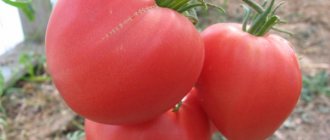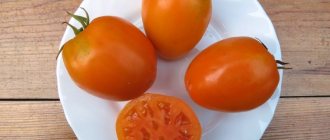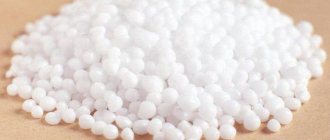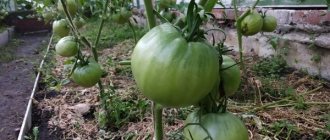Stationary greenhouses are a great help for summer residents. After all, they allow you to protect crops from adverse weather conditions, while obtaining an earlier harvest. Tomatoes, which are a heat-loving crop, are often grown in greenhouses. However, this method in itself does not relieve the summer resident from the need to care for plants. Tomatoes definitely need fertilizing for normal development and growth. The procedure for applying fertilizers for this crop in a greenhouse has its own characteristics.
Basic information: deadlines, schemes, entry rules
To obtain a good harvest, it is important to take into account the growth characteristics of the crop, as well as follow the rules of caring for them during flowering, during the period of formation and ripening of fruits. What fertilizer to use during the season and how not to make mistakes with the dosage and timing?
Among the most popular preparations are the following best fertilizers for tomatoes:
- Universal fertilizers: ammophosphate, potassium nitrate, superphosphate.
- Complex mineral fertilizers: potassium humate, agricola, mortar, signor tomato.
- Folk remedies : ash, yeast, boric acid, herbal infusion, whey with iodine.
During the season, tomatoes are fed from 5 to 7 times and are guided by the fertility of the land and their variety. These vegetables love mineral fertilizers, and also respond well to fertilizing with folk remedies, which promote the growth of green mass, the appearance of ovaries and the taste of fruits.
Important seasonal aspects of fertilizing when growing tomatoes:
- Seedlings . Agricola is added to the soil to germinate seeds. These actions are carried out as needed.
- Planting in open ground . It is necessary to add urea, nitrophoska or ammophoska to the beds prepared in the fall (mixed soil with humus). If there are no ready-made plots, complexes with nitrogen, phosphorus, or potassium should be added when digging.
- A couple of weeks after planting in the garden. Tomatoes need to be fed with potassium nitrate and superphosphate.
- A period of active growth . Phosphorus and nitrogen are good “helpers” for growing roots, stems, and leaves. Ash and superphosphate will help. Fertilizing needs to be done 1-2 times.
- Bloom . Fertilizers are used in combination: Crystalon tomato, Signor tomato, weed infusion. In this case, you need to fertilize the soil one to three times.
- Fruit setting . Ammophoska or ash should be added to the soil. And there will be several such feedings.
- Fruiting . Fertilization is done for one purpose: to preserve the crop. Here you can use boron, magnesium, iodine.
How to determine the lack of nutrients by appearance
For good growth and fruiting, the crop needs the following elements: potassium, nitrogen, phosphorus, sulfur, calcium, magnesium. Likes to be fed with copper, iron, boron, zinc.
- Lack of nitrogen. A clear sign of this problem is that the leaves are small and pale, and the flowering is premature. The fruits are very small and hard to the touch.
- Lack of phosphorus. Tomatoes grow slowly and the leaves are purple on the underside. They hardly bloom. The fruits ripen are hard to the touch and tasteless.
- deficiency . Small veins of leaves fade. The foliage is dark, with a hint of rust. Weak stems and few buds. Tomatoes ripen with dark spots on the sides.
How often to feed tomatoes after planting in a greenhouse
Over the entire season, tomatoes are fed six times. Of course, this is not so strict and it is necessary to plan the amount of fertilizing not in advance (simply because it is necessary), but based on the condition of your plants.
For example, in good soil, your tomatoes can grow and develop well. It is not at all necessary to stuff the soil and plants with fertilizers exactly six times a season. And if the plants lag behind in development, bloom poorly, form an ovary poorly, and this ovary grows very slowly, then you definitely need to sound the alarm and carry out all the necessary fertilizing during the season.
You are the owner of your land and the greenhouse on it. Therefore, you should be well aware of the condition of the soil in the greenhouse, what crops grew on it last season and what elements they brought out in maximum quantities. Knowing this, you can replenish the soil with certain elements or simply a complex of fertilizers.
- First feeding. It is carried out directly when planting seedlings in the ground.
- Second feeding. It is carried out when approximately two weeks have passed from the moment the seedlings are planted in the ground.
- Third contribution. Usually carried out when tomatoes begin to actively grow.
- Fourth contribution. It is carried out when tomatoes are actively blooming.
- Fifth entry. It is carried out when the fruits begin to set.
- Sixth feeding. It is carried out when the tomatoes are actively bearing fruit.
Photo pixabay/AKuptsova: Typically, fertilizers are applied six times.
Types of fertilizers for tomatoes
There are organic and mineral preparations, as well as folk remedies.
Organic
Includes a complex of minerals necessary for the vegetable from planting until the fruit ripens.
Good organic fertilizers are:
Manure and bird droppings
They improve soil structure and can be a source of nutrients.
During the growing season, they can be mixed with soil before planting seedlings. And for the garden bed you need to take rotted manure, which contains almost no ammonia.
Humates
These are potassium and sodium salts that are part of humic acids. Such organic matter is used on any land, excluding black soil saturated with humus. Improves fruit quality.
They can be purchased in special gardening stores in combination with other mineral complexes. Among the most famous: Krepysh, Krepysh for seedlings, Gumat Super.
Reference. Plants are fed with such organic matter during the growing of tomato seedlings, after planting, and during the flowering period.
Green manure
Green fertilizers: oats, clover, rapeseed, rye. Sowed in autumn in the area where tomatoes will be planted.
In the spring, before planting tomato seedlings, you need to dig up the soil in the area with green manure. In this way, the soil is healed and saturated with useful microelements.
Mineral fertilizers
Nitrogen in the composition
Needed to form more ovaries. You can use ammonium sulfate, ammonium nitrate, urea.
Important! Fertilizers containing nitrogen make the soil acidic. For this reason, limestones are added to the ground along with them.
Phosphorus
When tomatoes are fed with phosphorus, they develop a powerful root with many shoots. Superphosphate and its double equivalent are used for feeding. The phosphorus content in it varies up to 50%.
Signs of a lack or excess of nutrients in the soil
With a lack of potassium, the leaves of tomatoes become lighter and drier. It looks like a burn. Over time, the edges of the leaves begin to turn brown and curl slightly upward.
Deterioration in the quality of relationships: the dangers of speculation about colleagues
How to achieve a balance of work and rest and what you need to know about this phenomenon
Don't get carried away by emotions: five ways to deal with an annoying boss
A lack of phosphorus manifests itself in the form of severe darkening of the leaves. Initially they acquire a rich green color, and then the veins and upper part acquire a slight purple tint. The leaves of the plants are rolled up and pressed as close as possible to the stem.
Two signs indicate calcium deficiency. Tomato leaves may become dark in color or the tips may dry out.
Nitrogen is the only mineral that, if deficient or overabundant, can cause harm to the plant. The lack of this substance manifests itself in the form of slow growth of tomato plants, the formation of too small leaves and fruits. The leaves become weak, lethargic and acquire a yellowish tint. With an excess of nitrogen, there may be a significant thickening of the stem, cessation of the fruiting process, and active growth of stepsons. After planting in soil with undecomposed nitrogen, plants can burn completely.
Sales problems and neighbors: what you need to ask the owner before buying a home
It's never too late to learn new things: why it's not a shame to be an intern in adulthood
You should never take their word for it: how to work with sycophantic colleagues
With a lack of magnesium, the leaves may turn yellow, but the veins remain green. Lack of iron leads to chlorosis. This disease is manifested by the formation of gray cloudy spots on healthy tomato leaves.
Methods of application
Root feeding
A nutrient solution of the required concentration is applied under the bush during watering. It is also possible to embed granular mineral fertilizers into the root zone. The vegetable receives all the nutrients it needs for life through its roots.
Important! The method is most effective when growing seedlings.
Spraying leaves
An additional method for a faster effect is to spray the leaves with nutrient solutions.
It is important to consider the concentration of the solution. It should be 3-5 times weaker than root feeding to prevent leaf burns.
Reviews
Ekaterina Sergeevna:
When growing tomatoes in a greenhouse, I fertilize every 2 weeks. At the same time, I use complex mineral fertilizers and folk remedies. The most common folk remedies I use are infusions of nettles and dandelions. Plants after this feeding become stronger and stronger.
Morkovsky Stanislav:
I tried feeding the tomatoes with a yeast solution. Plants after this fertilizer begin to grow faster. To enhance the effect, I now mix yeast with other ingredients, which doubles the effect. I try not to use mineral fertilizers, but if there is lethargy, spots on the leaves or other negative manifestations of a lack of nutrients, I apply exactly the fertilizers that the plants require at the moment.
Evgeniya:
On the contrary, I prefer complex fertilizers. They are easier to use and the dosage can be easily calculated. The only folk method I used was a solution of serum with iodine. When sprayed with the mixture, plants do not get sick. An interesting option for feeding with onion peels. I want to try it.
How many times per season should tomatoes be fed?
Tomatoes need to be fertilized three to four times during the summer season. The exception is flowering time.
In the fall, you can mix granular fertilizers with sand and then dig up the area with a shovel. In the spring, if there is no autumn digging, you should fertilize the beds about 3-4 weeks before planting.
During the growing season, it is advisable to water the bushes with nutrient solutions at the root every 2-3 weeks.
There are five main stages that relate to the developmental stages of these delicious vegetables:
- When planting in the garden. The soil must be fertilized with organic matter and minerals. Otherwise, the seedlings will develop slowly and begin to get sick.
- 2 weeks after planting. At this time, young bushes appear that need balanced feeding.
- During a period of active growth . Here it is important to add microelements to the soil in time to accelerate the development of the root system and the appearance of the first leaves.
- During flowering . All fertilizing in this case helps the crop to set fruit faster. Otherwise, the ovary may fall from the bushes without having time to pollinate.
- During the fruiting period . In this case, feed for the last time. Complementary feeding is usually done to improve taste and accelerate the ripening of fruits.
How to feed tomato seedlings in spring
It is best to start the procedure two days after the pick. After 8 days, it is necessary to add the following nutrient mixture to the soil:
- dissolve saltpeter with ammonia (18 g) in 10 liters of water,
- add superphosphate (80 grams),
- and potassium sulfate (25 grams).
What to feed to make them plump
Why do gardeners hope that as they grow, tomato bushes will become strong and plump? Yes, because such plants give a more generous harvest. Thick stems provide adequate nutrition to the fruits and do not break off under the weight of ripe vegetables. The aspirations of gardeners are not always justified in themselves. Tomatoes often need to be helped by feeding.
If you also encounter this problem, try one of the recipes below:
- You need to mix 500 g of chicken manure, 500 g of wood ash, 1 glass of sugar, 10 g of dry yeast and pour the ingredients into 10 liters of water. Before use, the mixture must be properly fermented.
- Tomatoes must be fed in a timely manner to avoid thinning of the stems. The bushes will be strong if they are fed with calcium nitrate or urea in the early stages of growth, using 30 grams of fertilizer per 10 liters of water.
- You can give tomatoes a large dose of potassium using banana peel tincture. The peels of 4 bananas are placed in a three-liter jar and filled with warm water. The fertilizer should infuse for 3 days in a dark, cool place. After this period, fertilizing is used for watering at the root to strengthen the stems.
It is necessary to monitor the condition of the plants even at the seedling stage, because it is at this time that the tomatoes begin to stretch. In addition to self-prepared fertilizers, you can use industrial preparations, for example, “Athlete” or “Stop Growth”. Both products promote enhanced root growth while simultaneously stopping the growth of the vegetative part.
The growth stimulator “Etamon” has proven itself well when growing tomato seedlings. After using it, the bushes become lush, beautiful, strong, and develop roots well.
To prevent seedlings from stretching out due to a lack of important microelements, they are fed 2 weeks after picking with one of the complex mineral fertilizers:
- "Agricola";
- "Baby";
- "Strong";
- "Emerald";
- "Fertika Lux";
- "Ideal";
- "Solution";
- "Ferovit".
After another 2 weeks, fertilizing is repeated.
If you did everything correctly at this stage, then by the time you transplant them into the ground, the tomato bushes will be strong and healthy, with thick stems and emerald leaves.
Fertilizer application schedule (tomato fertilizing calendar)
By checking this calendar, you can determine at what time interval to feed vegetables both in the open area and under the film.
| Stage of growth and development | Month | How many times to feed | What microelements are needed? | Facilities |
| Open ground | May | 1 | phosphorus, potassium, nitrogen | Ammofoska, Senor Tomato, Ash, Humus |
| Half a month after landing | May June | 1-2 | the same substances as in May + microelements | Superphosphate, Ammonium nitrate, Humate, Mullein |
| During growth | May and June | 2 | nitrogen, phosphorus | Superphosphate, Nitroammophoska, Ash, Iodine (solution) |
| Bloom | may June July | 3 | phosphorus, potassium | Senor Tomato, Mortar, Kemira Lux, Universal, Herbal Infusion |
| Fruit setting | June July | 2-3 | phosphorus, potassium | Tamaton, Ovary, Sudarushka, Ammofoska, Ash |
| Fruiting | June July August | 3 | iodine, manganese, boron, phosphorus, potassium | Mortar, Potassium sulfate, Boric acid, Mullein, Ash |
Is it necessary to fertilize tomatoes strictly according to schedule?
The frequency of fertilization in particular cases can be changed. Examples of such situations:
- the beds are prepared in advance. When placing tomatoes in soil, there is no need to add anything else;
- the seedlings are sufficiently saturated with nutrients before planting;
- when the tomatoes are healthy and there is no need to strictly follow the feeding schedule.
Important! Tomatoes grown in separate boxes should be fertilized regularly.
What minerals are needed for tomatoes?
Soil fertility is very important for growing tomatoes. The soil must contain all the required macro- and microelements for the normal development and growth of the crop. Each of these substances is responsible for normalizing a specific plant function. The following substances are required for the growth and fruiting of tomatoes:
- phosphorus;
- potassium;
- nitrogen;
- calcium;
- iron;
- magnesium.
Potassium is responsible for normal water balance. It allows the roots to absorb the required amount of moisture and deliver it to the upper leaves of the tomatoes. In addition, potassium is actively involved in the production of carbohydrates and makes tomatoes more resistant to low temperatures, fungi and drought. This macroelement plays an important role in the process of plant rooting.
Phosphorus helps roots absorb the required amount of various beneficial nutrients directly from the soil. Without phosphorus, all other fertilizing is simply pointless.
Calcium is directly involved in the process of active cell division. Nitrogen allows plant cells to divide more actively, as a result of which tomatoes grow well.
Magnesium is an essential macronutrient for the production of chlorophyll and is additionally involved in photosynthesis.
Iron allows plants to breathe normally.
For full growth and fruiting, all these substances must be combined in the required quantities. If there is a deficiency of one or another substance in the soil, this gradually leads to a deterioration in the growth of seedlings, a decrease in fruiting, significant wilting and subsequent death of tomatoes.
Depending on growing conditions
Location on
After the seedlings have entered the greenhouse or garden bed, it is advisable to fertilize them well. For this purpose, it is important to use the same beneficial substances that were used in the summer.
In the greenhouse
At the end of spring - beginning of summer, seedlings are fertilized comprehensively. Be sure to include nitrogen, phosphorus, and potassium in the diet for vegetables.
Important! There is high humidity in the greenhouse. Therefore, tomatoes respond better to fertilizing than their garden “brothers”. For this reason, the concentration of fertilizers for greenhouse crops should be minimal.
At home and on the balcony
How to fertilize tomatoes in an apartment? For convenience, you can use purchased mineral compositions, both granules and liquid. And during flowering, ovary and fruiting, it is advisable to apply fertilizers to the soil that contain phosphorus and potassium.
To feed tomatoes grown on the balcony, mineral mixtures dissolved in water are used. Water the vegetables at the root. You can also apply foliar fertilizer.
Additional fertilizing
You can feed tomatoes no matter what stage of cultivation they are at. Yeast can be used. It is worth noting that this is the best fertilizer for tomatoes in a greenhouse.
Yeast can be used as a top dressing at various stages of cultivation. They are applied 4-5 times per season.
To prepare a yeast solution, you need to dissolve 1 kg of yeast in 5 liters of warm water. Let it sit until the fermentation process begins. Dilute the resulting product with warm water at the rate of 0.5 liters of concentrate per bucket of water. Approximately 0.5 liters should be applied per bush. fertilizing
Found a violation? Report content
We focus on the stage of development, taste and size of the fruit
What to add to the soil when preparing beds in the spring
The following fertilizers are excellent for preparing a plot for tomatoes:
- Kemira Universal . Balanced complex.
- Kemira Lux . Water-soluble drug.
- Universal , which contains, among other things, humic substances.
Attention! Be sure to follow the dosage when adding complementary foods. An excess of minerals is more dangerous than a deficiency.
After planting in the ground or in a greenhouse
Among others, it is very good to use folk remedies. Such as herbal tea. You can prepare it by adding chopped plantain and nettle to a container of water.
In open ground, the day before transplanting seedlings into a hole, it is best to water them with a solution of potassium permanganate. You can also sprinkle crushed shells and wood ash under their roots.
Important! Potted seedlings on peat do not need additional fertilizers.
When flowering
For full-fledged ovaries, it is worth applying fertilizers with the entire complex of nutrients to the vegetable bed:
- Novofert Universal
- Tomato crystal (in white packaging)
- Fertika Universal
- Red giant
You can fertilize with infusion of bird droppings and potassium sulfate. You should also feed it with ash to speed up the setting and ripening of fruits.
Greenhouse vegetables will enjoy adding magnesium sulfate to their daily diet during this time.
During the fruiting period
At this time, tomatoes require superphosphate and potassium humate as fertilizer. These mixtures are applied at the root of each bush.
During the fruiting period, plants also increase their need for potassium, boron, manganese and iodine.
To increase productivity
Effector can be used as an organic substance for these purposes. It is used to accelerate growth. Its composition:
- composted peat
- dolomite flour
- potassium chloride
- phosphate rock
For large-fruited varieties
For such varieties, fertilizing should be carried out by checking the information on the bag of seeds. As a rule, it is worth adding potassium sulfate to the soil as a fertilizer according to the scheme.
To increase sweetness
To make the tomatoes sweet and tasty, use the following fertilizers:
- solution . It is advisable to water both leaves and roots with this solution.
- Potassium solutions . They are added exclusively at the root.
- solution . It is used as complementary food in the spring, because it contains enough substances to provide sweetness.
- solution . A universal drug that nourishes the root system. Before using it, it is advisable to water the tomato bushes generously with plain water.
- Infusion of wood ash. An excellent substitute for mineral supplements. Naturally sweetens vegetables. As a rule, the site is fertilized with ash three times a year every two weeks.
- solution . During flowering, the bushes can be watered with a weak solution of potassium permanganate. It will repel plant pests.
How to properly feed tomatoes to grow quickly
Tomato feeding should be carried out according to all the rules, taking into account factors such as the air temperature in the greenhouse and the time of application.
At what temperature
The optimal air temperature for processing tomatoes is 18-25 degrees. Temperatures below 16 degrees impair the absorption of phosphorus and nitrogen by bushes. At the same time, roots develop slowly and plant survival rate deteriorates.
Temperatures above 26-28 degrees are also undesirable. At high temperatures, pollen grains stick together and fruiting does not occur in the bushes. The greenhouse must have good ventilation. When applying mineral and organic fertilizers, doors and windows in the greenhouse must be opened.
Air humidity should be at around 70 percent. Higher humidity negatively affects the absorption of nutrients.
What time
Any fertilizing should be done early in the morning or late evening, as well as on a cloudy day or after rain. You cannot apply fertilizer during the day!
- The first feeding of tomatoes is carried out half a month after planting the seedlings in the greenhouse.
- Then fertilizers are applied when budding and the appearance of the first flowers.
- The third time this procedure is performed during the formation of flowers on the second brush and the formation of ovaries.
- The fourth feeding is carried out during the flowering of the third cluster.
Fertilizing stops 14 days before the fruits ripen, in order to avoid an excess of nutrients in the tomatoes.
Tomato feeding schemes: from seedlings to harvest
Scheme 1. The complete process is performed three times:
- For the first time after planting tomatoes, a compound of potassium sulfate and double superphosphate is taken. For depleted soil, you can add ammonium nitrate (two weeks after planting).
- The second time, fertilizers (liquid composition of nitrate and potassium) are added during the period of fruit formation.
- The third feeding is similar in mineral composition to the second. Here you need to wait a month after the last feeding.
In the open ground
Also, as in the previous example, it is used in open areas, but according to scheme 2.
Nitrogen-containing fertilizers are applied to the soil. An important emphasis: the addition of minerals is carried out when plowing the garden in the fall.
A three-time fertilizer application schedule is used:
- The first feeding is after 10 days, when the tomatoes are already in the garden.
- The second application of nutrients is 20 days after the first feeding.
- The third feeding is carried out half a month later than the second.
During the entire growing season, the amount of complementary foods introduced can be no more than ten times .
In a greenhouse or at home
The amount of soil in the boxes is limited. For this reason, foliar fertilizers can be added to root fertilizers. It is best to spray the above-ground part of the bush with a nutrient mixture. This must be done about 10 times during the entire period after planting the vegetables.
The basic fertilization scheme indicated above is reduced to one, maximum two times. Manipulations in closed containers should be carried out only during flowering and fruiting.
Reference. It is not recommended to get too carried away with spraying homemade tomatoes, as this can lead to constant moisture in the leaves and, as a result, rotting of the vegetable crop.
Soil preparation
Soil preparation consists of cleaning and fertilizing. Pest larvae and fungi can be removed by warming the soil or pouring boiling water or a manganese solution into it.
You need to dig up the soil in the greenhouse starting in the fall, after removing the remaining vegetation. You can also add rotted or fresh manure. In the spring, after processing the greenhouse, you need to loosen the soil again and add special fertilizers, which contain potassium and phosphorus. This will create favorable conditions for the rooting and growth of tomato seedlings.
Basic rules and recommendations
Main important points:
- Fertilize 10-15 days after planting seedlings using both root and foliar methods. You can use 10 g of superphosphate dissolved in a liter of liquid as such a remedy.
- For better fruiting, you need to feed the vegetables after the first ovaries appear. Moreover, the feeding itself is carried out only at the root. Calcium nitrate (2 g per 1 liter of water).
- Foliar spraying must be performed during the first half of the growing season. Roots are made during the entire period of fruit development (20 g ammonium nitrate + 25 g potassium sulfate).
- In a greenhouse with dry soil, it is necessary to slightly moisten the soil before applying fertilizer.
- It is best to water with clean water, the temperature of which is not lower than 20-22 degrees above zero. When watering under the film, it is important that water does not get on the leaves. Otherwise, excess moisture may appear on them.
- When applying complex fertilizers, watering should be carried out in the early morning before sunrise, or in the early evening immediately after sunset.
Important! Always pay attention to the appearance of plants and their reaction to the application of certain fertilizers.
Common mistakes and useful tips
Sometimes numerous mistakes are made when growing tomatoes. To avoid them, you need to listen to the advice of experienced gardeners.
- Fertilizers are not applied at the right time . Untimely watering with a preparation that contains nitrogen interferes with plant growth. In this case, you need to pay close attention to fertilizers and use them strictly for their intended purpose.
- Violation of the maximum permissible concentration . Fertilizer added in excess can cause chemical burns. It is important to follow the instructions here.
- Fascination with home remedies . They can only be used secondarily. Constant fertilizing with organic matter is harmful to tomatoes.
- Fertilizers are applied incorrectly . Root feeding is carried out only on wet soil. This way microelements are better absorbed by the plant.
Following the rules for adding nutrients minimally reduces the possibility of making mistakes.
At what time are fertilizing applied?
For root feeding, choose morning or evening. It is better if it is a dry, cloudy day, when there are no scorching rays and high humidity. The prepared solution is scooped up with a ladle and poured into the base of the stem of each bush, being careful not to get on the plants.
Foliar feeding of tomatoes is always carried out only in the morning. Usually the bushes are sprayed, trying to do it before 10 o'clock. By evening, the leaves must be completely dry, otherwise the development of fungal diseases can be provoked. The surface of tomato leaves is fleecy, so it takes quite a long time to dry.
The tomatoes must be watered first, otherwise the fertilizers may burn the roots, and in this case the nutrition will be absorbed smoothly and rationed.
It is better to time foliar feeding in conjunction with preventive treatments against diseases and pests, but you must remember that preparations containing metal oxides are not compatible with any other substances. This rule also applies to copper-containing products.
On a note! In the greenhouse in the spring, tomatoes are fertilized only at temperatures above 15°C, otherwise the plants simply will not be able to absorb nutrients.
Features of nightshade care
Immediately from the moment of planting, tomatoes need potassium-phosphorus supplements to restore the root system. The tomatoes acclimate and regrow their roots using minerals and vitamins derived from the soil. With the help of nitrogen, seedlings adapt and develop better. You need to be careful with nitrogen so as not to increase the mass of greenery to the detriment of the harvest. During flowering, phosphorus, calcium, potassium, sulfur, and iron are needed.
In addition to fertilizers, to successfully grow nightshades, you need to choose the right soil, provide sufficient light and heat, and protect from the wind. Planting in the ground and in a greenhouse has its own advantages, and in each case you cannot do without fertilizers.
Feeding rules
Time: morning or evening, or day if it’s cloudy outside. Fertilizing combines well with watering. Right before applying mineral fertilizing, it is necessary to water the soil, since fertilizing is carried out in a moist environment.
Fertilizer dosage: 1 plant needs 0.5 liters of liquid fertilizer. It is necessary to feed systematically, every week or two, for constant feeding of the seedling, it is possible more often, but with a low concentrated solution.
When the third cluster begins to form and the fourth cluster blooms, the plants feed more from the ground. Just at this time it is necessary to actively feed the tomatoes with potassium mixtures with Ca, Mg, B, feeding once every five to seven days.
How to feed tomatoes for good growth
If tomato seedlings grow very slowly, they need to be fed with sodium humate. The fertilizer is prepared in accordance with the instructions for the preparation and watered with it at the root of each plant.
If the growth of apical and lateral shoots of tomatoes is delayed, and yellowness appears on young leaves, then most likely they lack nitrogen. Such tomatoes can be fed with any nitrogen fertilizer.
If you prefer organic fertilizers, then to stimulate the growth of tomatoes it is best to use fermented nettle infusion











